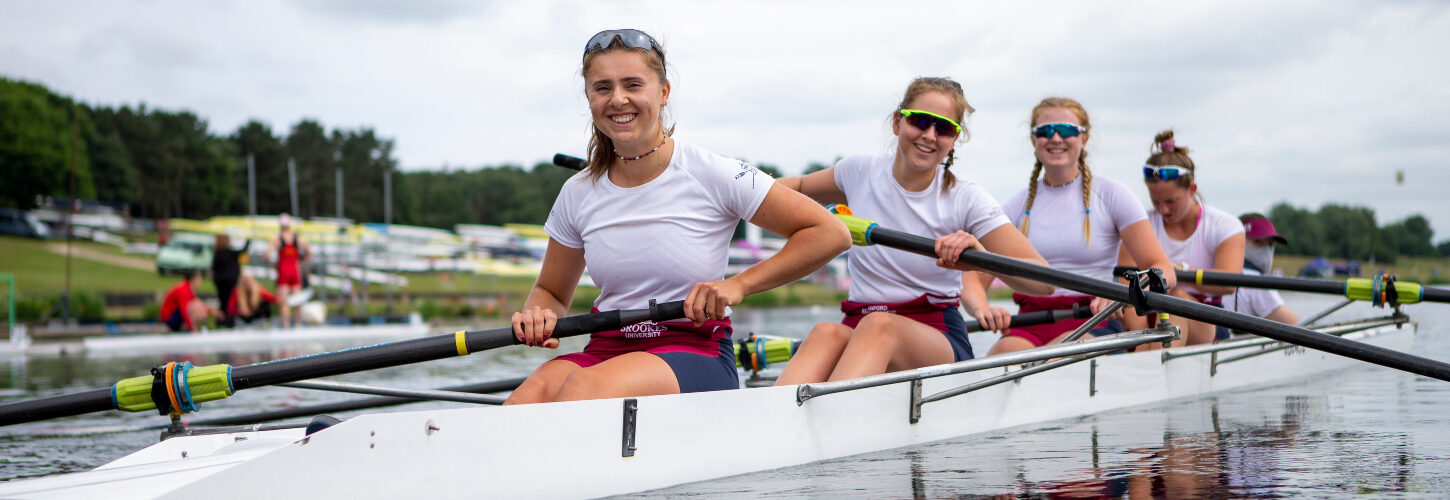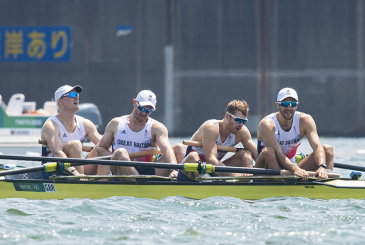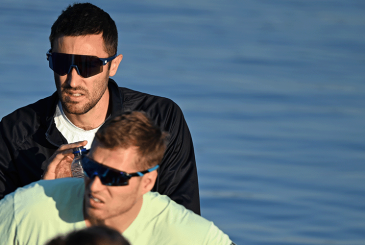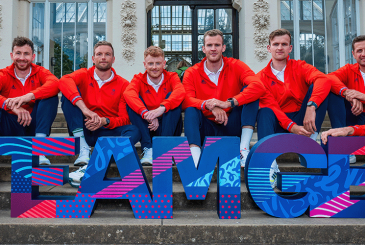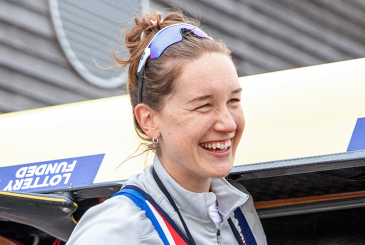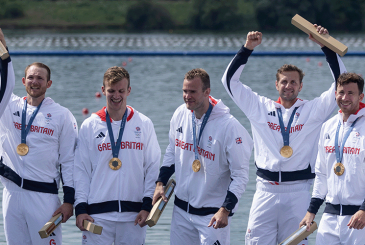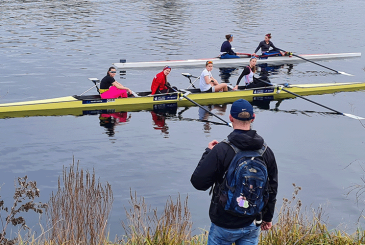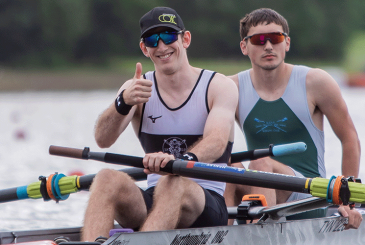High-performing teams often have six key characteristics which may contribute to your crew’s performance on the water. Sophie Bashford, British Rowing’s Senior Performance Psychologist, explains more below
In the following article, Sophie talks us through the underpinnings of a successful team. What Sophie perceives to contribute to team effectiveness is a combination of what she has learnt from a theoretical knowledge base, applied practice and contextual learnings. So if your team or crew is looking to perform to its best on the water then hopefully this will be a valuable read.
The function of effective and ineffective teams or ‘high-performing teams’ has long been a researched topic within the sporting world and extends towards and beyond business, military, healthcare, and many other performance settings. There is a widespread interest in understanding what makes a unique set of individuals effective when they come together to work towards achieving collective excellence as one team. This curiosity has grown from the knowledge and respect that effective high-performing teams are not simply a result of bringing together a set of successful and talented individuals and hoping they collaborate well.
High-performance teams are often described as a collective group of individuals with specific roles, matching their unique talents and skills, who are committed and aligned towards a common purpose, with focus. They innovate and collaborate to produce superior results whilst successfully navigating challenge together (Robin, 2015).
In my own work in elite sport, I have seen the following characteristics of high-risk and high-performing teams:
| High-risk teams | High-performing teams |
| Unable to effectively manage conflict and avoid challenging environments | Accepting of mistakes, losses and consequences with a learning and future thinking attitude. |
| Inability to challenge self, others, or the shared vision | Supportive of those around them with accountability of their own actions and the actions of others. |
| Become individualistic or too focused on others with an inability to see their own flaws or failures | Are willing and able to show vulnerability, opening up to their own mistakes and failures with honesty and commitment. |
| Become defensive and attribute blame with judgement and negative body language. | Are self-aware, reflective and able to take a non-judgemental approach to understanding and future solutions. |
| Breakdowns in communication (with too much or too little), leading with assumptions and emotion. | Remain composed in critical moments and can communicate calmly with a healthy distance from their emotions |
| Social and emotional resources become depleted and the task takes energy rather than it giving energy to the individual and team. | Maintain consistent in their processes, with timely actions and parity in contribution, bringing a positive and consistent energy to the task. |
But what are the underpinnings that help build the foundations of high-performing teams that are effective in how they go about achieving joint success?
Whilst working with a range of teams across elite sport, I have identified six underpinnings of a successful team.
1 – Creating a psychologically safe environment
Psychological safety is “the feeling that taking interpersonal risks will not result in embarrassment, ridicule, or shame, enables people to engage, connect, change and learn” (Edmondson & Lei, 2014).
Safety is a basic human need for holistic functioning, and many researchers have found that with perceived safety, we become more open-minded and motivated to action and accomplish our goals, regardless of the inevitable discomfort that may come with such new experiences. Psychological safety allows us to develop and utilise our best selves.
Some ideas for creating a psychologically safe environment can be to:
- allow mistakes and share times when you have made them yourself
- promote curiosity by asking for opinions and ideas and show curiosity in return
- encourage collaboration between team members
- ask for feedback and listen to it
- role model authenticity and vulnerability.
2 – Having a shared vision and an aligned purpose
Successful teams create a convincing and meaningful ‘team why’. What this entails is deliberating and confirming what it is that you truly stand for as a team and what is most important to you. A mission statement if you will, that captures your collective contribution and impact you will have as a team, far beyond performance, races, numbers, and medals.
Once establishing your ‘team why’, backing that up with your team values will help you collectively, and individually, guide your behaviours towards your why. (The works of Simon Sinek and Viktor Frankl’s Man’s Search for Meaning are two of my favourites here if you wanted to do some further reading).
3 – Creating a true sense of belonging and team identity
As humans, we seek connection. Belonging is a basic need of our human experience and development potential. We long to feel connected to others and feel part of a community. Therefore, creating a sense of belonging in a team is imperative to success. This can be achieved by understanding each other as individuals first on a human level.
Acknowledge each team member’s uniqueness, identify their strengths, share why it is you want them in your team, and what they bring to the team that no one else does. Assigning roles and creating responsibility based on people’s unique strengths gives a sense of purpose to each individual and allows them to contribute in a meaningful and authentic way. Creating shared experiences that connect with the human not the performer or trainer is key.
4 – Agreeing effective team processes
This will look different for every team and will be unique to the context and demands of your sport. However, a few processes that will be applicable to many will be as follows:
- using a consistent briefing and debriefing process for training and performance
- establishing your collective method for giving and receiving feedback that promotes honesty, development, and personal growth
- creating a shared mental model for communication and problem-solving to support technical and tactical development
- agreeing an optimal review framework for monitoring progress over time.
“There is huge skill in learning how to lose together, as well as learning how to win together”
5 – Building an adaptive resilience
The ability to overcome external challenges and adversity whilst navigating internal differences and conflict is a key skill of high-performing teams. There is huge skill in learning how to lose together, as well as learning how to win together. Being able to identify what can derail team processes and performances is a key foundation before agreeing a collective set of behaviours that are expected of each other, under times of adversity. What is most important however is that teams develop a framework for giving critical feedback and a process for managing internal conflicts.
6 – Embedding effectiveness under pressure
This starts with an individual’s self-awareness by knowing stress triggers, stress responses and how one thinks, feels, and acts under pressure. High-performing teams are able to articulate these reflections with team members and agree how they will then support each other most effectively when needed. Supporting each other requires each other to be able to notice when one might be feeling the pressures of the event, so that team members are able to support them in resetting, helping them to reconnect with their strengths and taking committed action by trying to create some positive momentum.
Creating, maintaining, and evolving high-performing teams that are effective through training, competition, low and high levels of stress is, as I have witnessed, one of the most important and impactful variables of high-performing sport.
Take purposeful time to develop this area of your game and it will make a difference to your performance on the water.
Photo: Drew Smith


